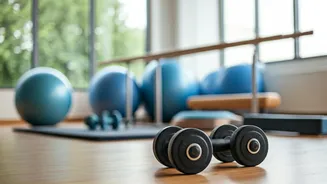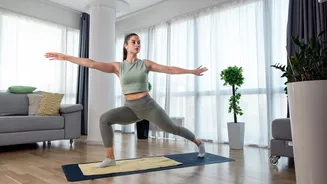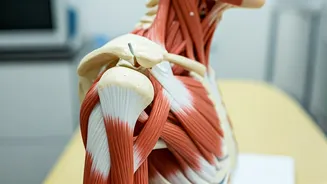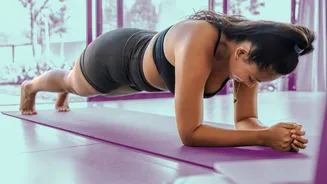Warm-up Essentials
Before diving into any exercise routine, it's crucial to properly warm up the body. This prepares the muscles and joints for movement, reducing the risk
of injury. A good warm-up typically includes gentle stretching and light cardiovascular activities. For example, begin with slow arm circles, both forward and backward, for about one minute each. Then, do neck rotations, carefully turning your head from side to side and up and down for 30 seconds. Follow this with marching in place or gentle jogging, raising your knees, for approximately five minutes. The aim is to increase blood flow and loosen the muscles. Remember to listen to your body and never push yourself beyond your comfort level. A proper warm-up not only readies the body but also enhances the effectiveness of the subsequent exercises.
Chair-Based Exercises
Chair-based exercises offer a safe and effective way to build strength and flexibility, especially for those with mobility challenges. Start with seated leg extensions: sit upright in a chair and extend one leg straight out in front of you, holding for a few seconds before lowering it. Alternate legs, repeating this 10–15 times. Next, try seated arm raises: with your arms at your sides, slowly raise them to shoulder height, hold, and then lower. Do 10–15 repetitions. Trunk twists are also beneficial: sit with your feet flat on the floor, and gently twist your upper body to one side, holding for a few seconds before returning to center. Repeat on the other side. These exercises can improve core strength and balance. Regular practice of these seated exercises can significantly improve overall physical function and well-being. Remember to maintain good posture throughout each exercise to maximize benefits and prevent strain.
Balance and Coordination
Maintaining balance and coordination is essential for people with Parkinson's, helping to prevent falls and maintain independence. A simple exercise to practice is the 'single-leg stance': stand near a stable surface, and lift one foot slightly off the ground, holding the position for as long as possible while maintaining balance. Repeat on the other leg. Another useful exercise involves walking heel-to-toe, mimicking a tightrope walk. Try to walk in a straight line, placing the heel of one foot directly in front of the toes of the other. For both exercises, start slowly, and if needed, use a wall or chair for support. These exercises should be done daily, and their duration can gradually increase as balance improves. With consistent practice, these exercises not only reduce the risk of falls but also improve overall mobility and confidence.
Stretching and Flexibility
Regular stretching is vital for maintaining flexibility and reducing stiffness, common symptoms of Parkinson's. Begin with gentle neck stretches: slowly tilt your head towards your shoulder, holding for 15-20 seconds, and repeat on the other side. Next, try shoulder stretches: reach one arm across your chest and use the other arm to gently pull it closer, holding for 20 seconds. Hand and wrist stretches are also crucial. Extend your arm and flex your wrist, pointing your fingers upward, and gently pull them back toward your body for 20 seconds. Repeat this on the other hand. For lower body flexibility, seated hamstring stretches can be beneficial: sit with one leg extended and gently reach for your toes. Hold this stretch for 20 seconds. Performing these stretches regularly can reduce stiffness and improve the range of motion. Remember to breathe deeply throughout each stretch and to not push yourself beyond your comfort zone.
Walking and Endurance
Walking is a fundamental exercise for people with Parkinson's, improving both endurance and mobility. Begin with short walks, gradually increasing the duration as tolerated. Focus on maintaining a good posture and stride, consciously thinking about lifting your feet off the ground. If you experience freezing (a sudden inability to move), try counting out loud or using visual cues, such as stepping over a line on the ground, to initiate movement. Incorporate various walking surfaces (such as flat ground and slight inclines) to challenge your balance. Using a walking aid, such as a cane or walker, can provide extra support and stability. Remember, consistency is key, aim to walk daily, even if it's just for a few minutes. Walking not only improves physical health but also contributes to mental well-being and a sense of independence, making it an essential part of managing Parkinson's.














